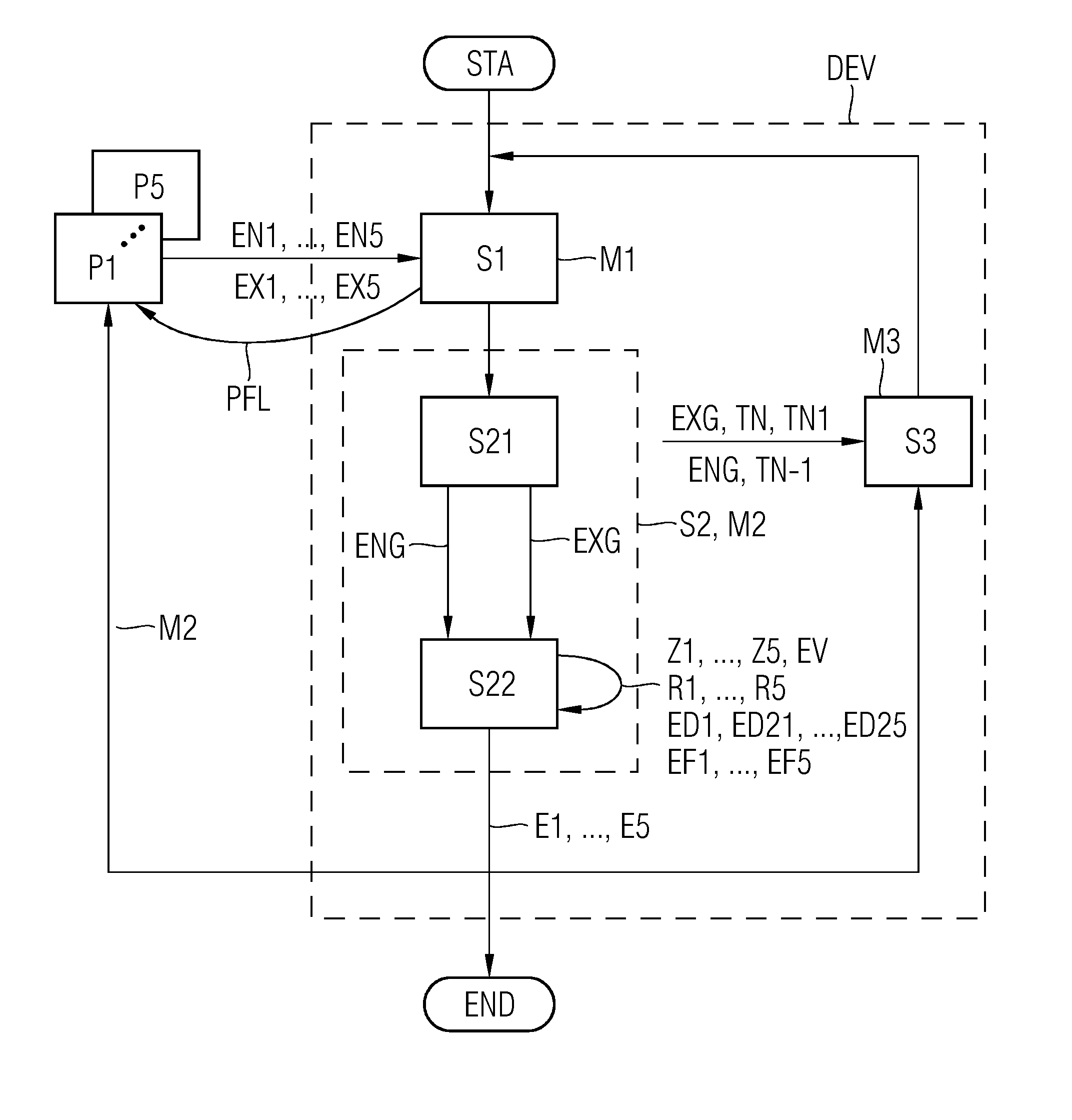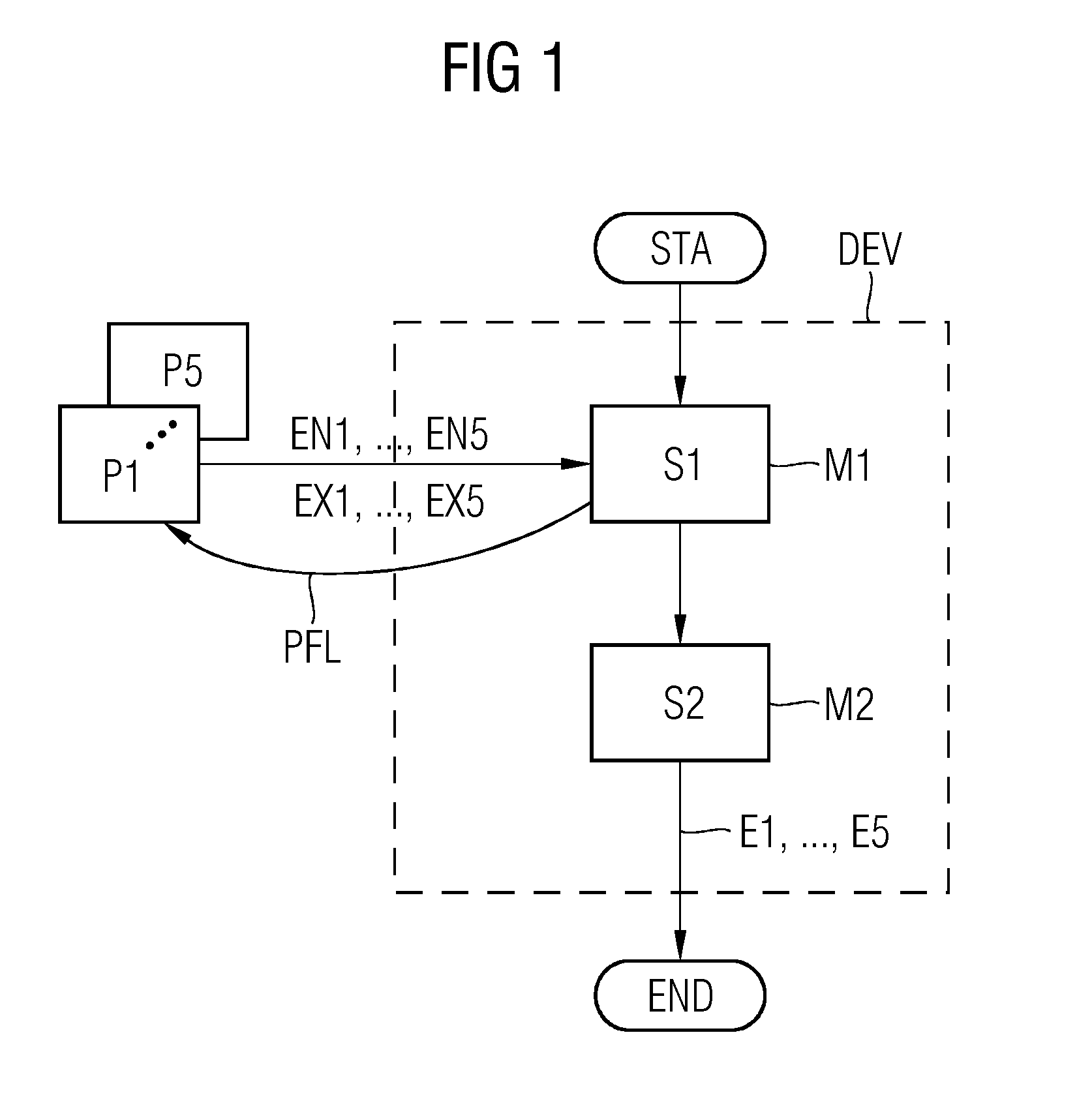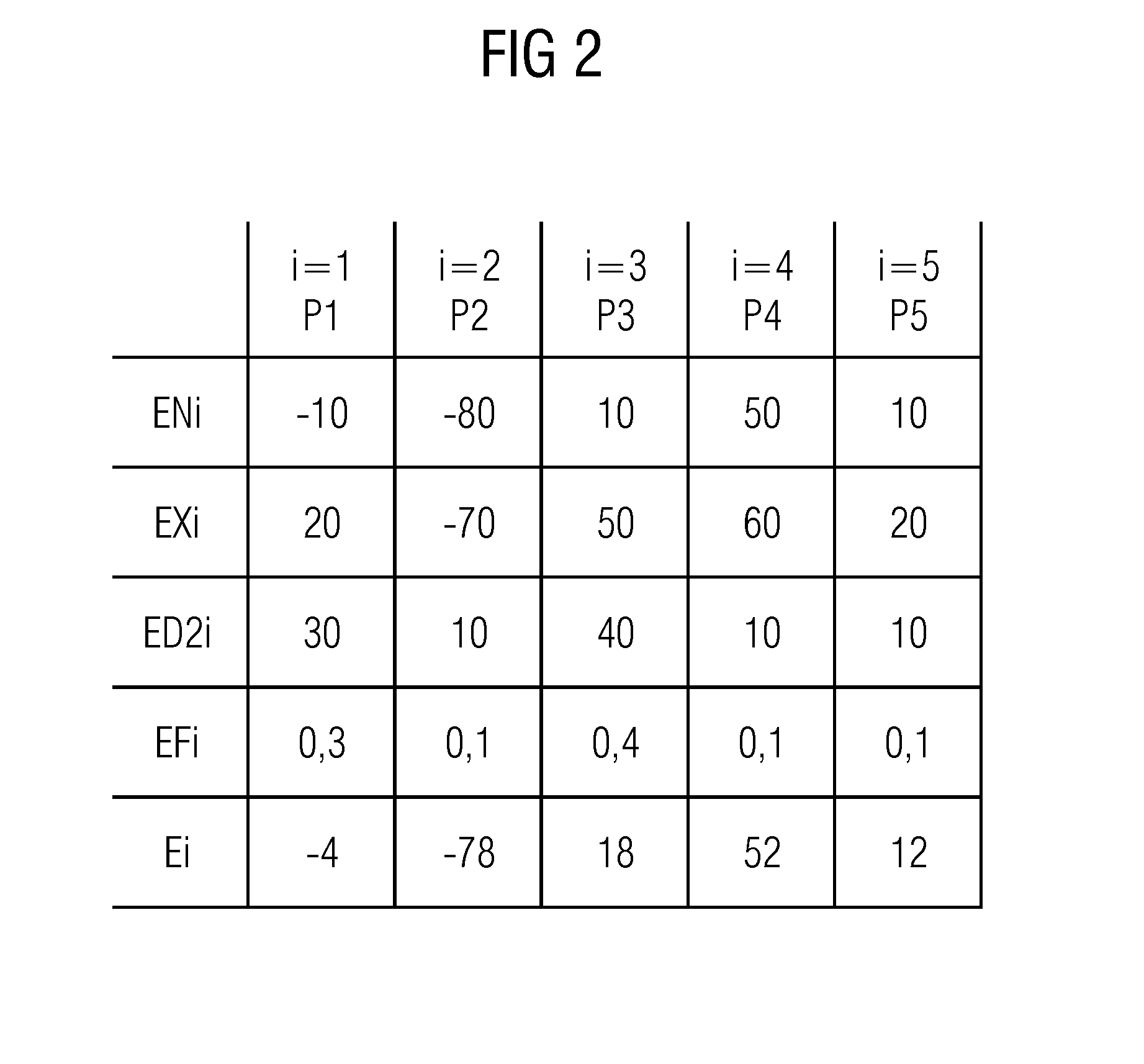Methods and apparatus for allocating amounts of energy
a technology of energy allocation and energy allocation, applied in non-electric variable control, process and machine control, instruments, etc., can solve the problems of increasing complexity in the balancing of power generation and power consumption in the electric grid, and it is increasingly difficult to forecast an amount of energy to be expected or generated, so as to improve the stability of the entire grid and achieve the effect of simple ability to be implemented and executed
- Summary
- Abstract
- Description
- Claims
- Application Information
AI Technical Summary
Benefits of technology
Problems solved by technology
Method used
Image
Examples
Embodiment Construction
[0032]Elements having the same function and mode of operation are provided with the same reference symbols in the figures.
[0033]FIG. 1 shows a flowchart for carrying out one embodiment of a method for allocating amounts of energy.
[0034]By way of example, in act S1, prosumers P1, . . . , P5 use a central unit to request respective minimum amounts of energy EN1, . . . , EN5 and maximum amounts of energy EX1, . . . , EX5 (see arrow PFL). The respective minimum and maximum amounts of energy per prosumer in an example are shown in FIG. 2.
[0035]In general, the maximum amount of energy defines an amount of energy that a prosumer may consume the most in a time interval or may minimally produce. In a way similar thereto, the minimum amount of energy defines an amount of energy that a prosumer may consume the least in a time interval or may maximally produce. Negative values of amounts of energy are available in FIG. 2 for providing amounts of energy, and positive values of amounts of energy ...
PUM
 Login to View More
Login to View More Abstract
Description
Claims
Application Information
 Login to View More
Login to View More - R&D
- Intellectual Property
- Life Sciences
- Materials
- Tech Scout
- Unparalleled Data Quality
- Higher Quality Content
- 60% Fewer Hallucinations
Browse by: Latest US Patents, China's latest patents, Technical Efficacy Thesaurus, Application Domain, Technology Topic, Popular Technical Reports.
© 2025 PatSnap. All rights reserved.Legal|Privacy policy|Modern Slavery Act Transparency Statement|Sitemap|About US| Contact US: help@patsnap.com



